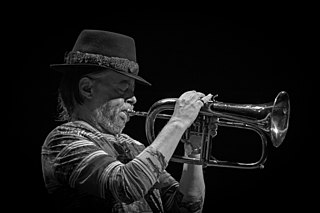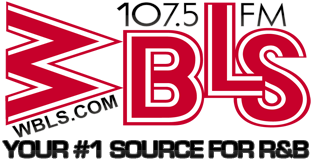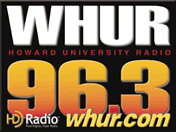Related Research Articles
Urban contemporary music, also known as urban music, hip hop, urban pop, or just simply urban, is a music radio format. The term was coined by New York radio DJ Frankie Crocker in the early to mid-1970s as a synonym for Black music. Urban contemporary radio stations feature a playlist made up entirely of Black genres such as R&B, pop-rap, quiet storm, urban adult contemporary, hip hop, Latin music such as Latin pop, Chicano R&B and Chicano rap, and Caribbean music such as reggae and soca. Urban contemporary was developed through the characteristics of genres such as R&B and soul.

Smooth jazz is a term used to describe commercially oriented crossover jazz music. Although often described as a "genre", it is a debatable and highly controversial subject in jazz music circles. As a radio format, however, it is clear that smooth jazz became the successor to easy listening music on radio station programming in the mid-1970s to the early 1990s.

Melvin Lindsey was an American radio and television personality in the Washington, D.C. area. He is widely known for originating the "Quiet Storm" late-night music programming format.

WBLS is an urban adult contemporary formatted FM radio station, licensed to New York City. It is currently owned by Mediaco Holding and operated by Emmis Communications under a shared services agreement, along with sister stations WLIB and WQHT. The three stations share studios in the Hudson Square neighborhood of Lower Manhattan, and WBLS' transmitter is located at the Empire State Building. It was previously owned by YMF Media LLC, owned jointly by investor Ronald Burkle and Magic Johnson, which had assumed control of WBLS and WLIB's former parent company, Inner City Broadcasting Corporation, on October 19, 2012, at a purchase price of $180 million.

WEPN-FM (98.7 MHz) branded ESPN New York, is a sports radio station licensed to New York, New York. The station is owned by Emmis Communications and its operations are controlled by Good Karma Brands, under a local marketing agreement. The station's transmitter is located at the Empire State Building.
A radio format or programming format describes the overall content broadcast on a radio station. The radio format emerged mainly in the United States in the 1950s, at a time when radio was compelled to develop new and exclusive ways to programming by competition with television. The formula has since spread as a reference for commercial radio programming worldwide.
Urban adult contemporary, often abbreviated as urban AC or UAC, is the name for a format of radio music, similar to an urban contemporary format. Radio stations using this format usually would not have hip hop music on their playlists, and generally include some mix of contemporary R&B and traditional R&B. Urban adult contemporary playlists generally consist of many different genres that originated amongst Black Americans including R&B, soul, funk, disco, jazz, pop, hip-hop, electro, quiet storm, gospel, new jack swing, and hip-hop soul.
Frankie "Hollywood" Crocker was an American disc jockey who helped grow WBLS, the black music radio station in New York.

WKYS is a commercial radio station licensed to Washington, D.C. The station is owned by Urban One through licensee Radio One Licenses, LLC, and broadcasts an urban contemporary radio format. It is co-owned with WMMJ, WOL, WPRS-FM, and WYCB, with studios and offices in Silver Spring, Maryland.

WHUR-FM is an urban adult contemporary radio station that is licensed to Washington, D.C., and serving the Metro D.C. area. It is owned and operated by Howard University, making it one of the few commercial radio stations in the United States to be owned by a college or university, as well as being the only independent, locally-owned station in the Washington, D.C., area. Staff members of the station mentor the students of the university's school of communications. The studios are located on campus in its Lower Quad portion, and the transmitter tower is based in the Tenleytown neighborhood. It is also co-owned with its television partner, WHUT-TV, one of D.C.'s PBS affiliates.
KBLX-FM is a commercial radio station licensed to Berkeley, California, and serving the San Francisco Bay Area. It is owned by Salt Lake City–based Bonneville International. The radio studios and offices are along Junipero Serra Boulevard in Daly City. The transmitter is atop the San Bruno Mountains.

WMXD is a commercial radio station in Detroit, Michigan, owned by iHeartMedia, Inc. The station operates with 45,000 watts of power from an antenna located on the Cadillac Tower building in downtown Detroit. The studios and offices were housed for years at Detroit's Penobscot Building until November 2009, when they were moved to the Clear Channel Communications, studios in Farmington Hills.

KJLH (102.3 FM) is an urban adult contemporary radio station licensed to Compton, California and serving the Los Angeles area. KJLH is owned by Taxi Productions, which in turn is owned by musician Stevie Wonder and operates from studios located in Inglewood, with its transmitter situated in a portion of unincorporated Los Angeles County in View Park-Windsor Hills.
Lawrence Tanter is an American public address announcer best known for his work for the Los Angeles Lakers of the National Basketball Association. In addition, Tanter was also the program director for public jazz radio station KKJZ.
WDMK; is a commercial FM radio station in Detroit, Michigan. Owned by Beasley Broadcast Group, it broadcasts an urban adult contemporary format. The studios and offices are on Radio Plaza in Ferndale.
Adult contemporary music (AC) is a form of radio-played popular music, ranging from 1960s vocal and 1970s soft rock music to predominantly ballad-heavy music of the 1980s to the present day, with varying degrees of easy listening, pop, soul, R&B, quiet storm and rock influence. Adult contemporary is generally a continuation of the easy listening and soft rock style that became popular in the 1960s and 1970s with some adjustments that reflect the evolution of pop/rock music.
Tim Marshall is a South Jersey radio personality, music producer, journalist, concert promoter, educator, and humanitarian. His career in broadcasting began in 1987 at Rowan University in Glassboro, New Jersey. Tim Marshall's professional radio affiliations include WTMR, Camden, New Jersey; WAYV FM Atlantic City, New Jersey; WPWT FM, WEJM FM, and 610 WIP-AM in Philadelphia; and WNAP Norristown, PA. His R&B Showcase radio program currently airs on WBZC-FM Pemberton, NJ.
Vaughn Harper was an American broadcast announcer and DJ.
Smooth jazz was a popular radio format that included songs by artists such as George Benson, Pat Metheny, Kenny G, Luther Vandross, Sade, Robin Thicke, Anita Baker, Basia, Dave Koz and Chuck Mangione. It began in the 1980s as "adult alternative" or NAC, a well-defined radio format, with jazz, new-age music and adult contemporary music. In the 1990s, the format became much more jazz-oriented, with very little new-age, and emphasizing young artists.
References
- ↑ Nelson George (2003). The Death of Rhythm and Blues. Penguin. pp. 132–33, 172–73. ISBN 9781101160671.
- ↑ King 2007, p. 180.
- ↑ Ripani 2006, p. 132.
- 1 2 King 2007, p. 181.
- ↑ Todd Beamon (February 10, 1987). "Durable Radio Format Survives Shift in Tastes". The New York Times.
- ↑ Rich Schapiro (July 9, 2016). "'Quiet Storm' DJ Vaughn Harper, longtime WBLS staple, dies at 71". New York Daily News. Archived from the original on August 17, 2016. Retrieved August 5, 2018.
- ↑ David Hinckley (May 20, 2008). "Radio: Milestone for a vintage Champaine". New York Daily News.
- 1 2 3 Nelson George (October 4, 1986). "Quiet Storm Sweeps Black Radio". Billboard. Vol. 98, no. 40. pp. 1, 90. ISSN 0006-2510.
- ↑ Ruben Castaneda (March 27, 1992). "Quiet Storm Radio Host Melvin Lindsey Dies at 36". The Washington Post .
- ↑ Jacqueline Trescott (September 5, 1985). "The Voice of the Evening". The Washington Post .
- ↑ Nelson George (December 20, 1986). "The Rhythm & Blues". Billboard. Vol. 98, no. 51. p. 25.
- ↑ "Trademark Status & Document Retrieval". tarr.uspto.gov. Archived from the original on March 21, 2012.
- ↑ Lynn Norment (May 2000). "Ms. Radio". Ebony. Vol. 55, no. 7. p. 100. ISSN 0012-9011.
- 1 2 3 4 5 6 7 Harvey, Eric (May 15, 2012). "The Quiet Storm". Pitchfork. Retrieved August 27, 2018.
- ↑ King 2007, pp. 180–81.
- ↑ King, Jason (2000). "Any Love: Silence, Theft, and Rumor in the Work of Luther Vandross". Callaloo. 23 (1): 422–447. doi:10.1353/cal.2000.0037. ISSN 0161-2492. JSTOR 3299570. S2CID 143209453.
- ↑ Beamon, Todd (February 19, 1987). "Durable Radio Format Survives Shift in Tastes". The New York Times. ISSN 0362-4331 . Retrieved March 20, 2020.
- ↑ Hurt, Byron, 1970- Gordon, Sabrina Schmidt. Winters, Bill, 1975- (2008), Hip-hop : beyond beats and rhymes, Media Education Foundation, ISBN 978-1-932869-23-1, OCLC 221291123
{{citation}}: CS1 maint: multiple names: authors list (link) CS1 maint: numeric names: authors list (link) - ↑ Clay, Andreana (October 2007). "Like an Old Soul Record: Black Feminism, Queer Sexuality, and the Hip-Hop Generation". Meridians: Feminism, Race, Transnationalism. 8 (1): 53–73. doi:10.2979/mer.2007.8.1.53. ISSN 1536-6936.
- ↑ "Keith Sweat Joins WBLS as Host of The Quiet Storm" Archived January 3, 2010, at the Wayback Machine , Premiere Networks, December 28, 2009.